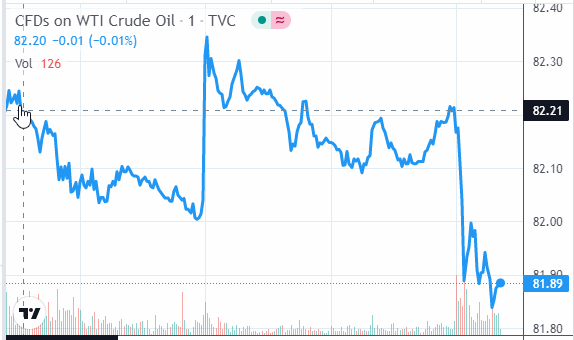The price of crude oil fell on Wednesday, something
that certain analysts were quick to associate with the US crude oil builds during
the past week, confirmed by the latest data.
The API, the American Petroleum Institute, said on
Tuesday that the US crude inventories rose by 2.3 million barrels for the week
ending October, 22. The EIA, US Energy Information Administration, meanwhile, released
its own data for the same periods that was 4.3 million barrels.
Since the figures were substantial as far as the
world’s largest consumer of the fossil fuels is concerned, the crude oil
markets quickly reacted to the development as expected; the price of both WTI
and Brent went down significantly reflecting the anxiety of the investors.
As of 17:00 GMT, the price of WTI and Brent were
$82.20 and $84.58 respectively.
Before the price of crude oil fell on Wednesday, it
had become seven-year high in the US and many developed nations; analysts
feared the rise would make an unfavourable impact on the global economic
recovery, especially in light of once-in-a-century pandemic.
They were right: Japan, for instance, admitted today
that its growth has dwindled due to rising fuel costs; its impact on the
developing world has already become disastrous.
In another ominous development, China recently
declared that there would be a global shortage of magnesium in the coming
months. It attributed the shortage to China’s own problems in the power sector
and the new self-imposed targets for reducing carbon emissions.
Magnesium is widely used in metal industry, auto
industry and packaging sectors and China accounts for 75% of the production of
the metal, most of which is exported to Europe.
The crisis involving magnesium appears on the
horizon at a time, when a catalogue of industries suffers from chip shortages
with the car industry bearing the brunt of it.
A range of supply chain issue are already stemming
from it, as every single one is inextricably linked to the existing political
rivalries.
In short, there is no easy way out of the supply
chain crises.
The combined impact of the supply chain anxieties
must have played its part in sudden fall of oil price, when there is clearly a
significant gap between the supply and demand.
China, meanwhile, says its tough measures on those who
speculate coal futures and hoard them to make hefty profits are working. It says
the price of coal has come down by more than 40% in a matter of days.
If China has addressed the issues of shortages of
coal and its sky high prices, as it claims, its impact will be felt in crude
oil markets too, as the former is the world’s second largest consumer of the
crude oil.
In short, the so-called energy crunch is gradually evolving
into a stage that can be managed without global emergency measures. Investors in
the crude oil sectors may have felt it in the last few days, when the cumulative
sentiments in the relevant sectors are taken on board, rather than reacting to
mere speculations in isolation.







